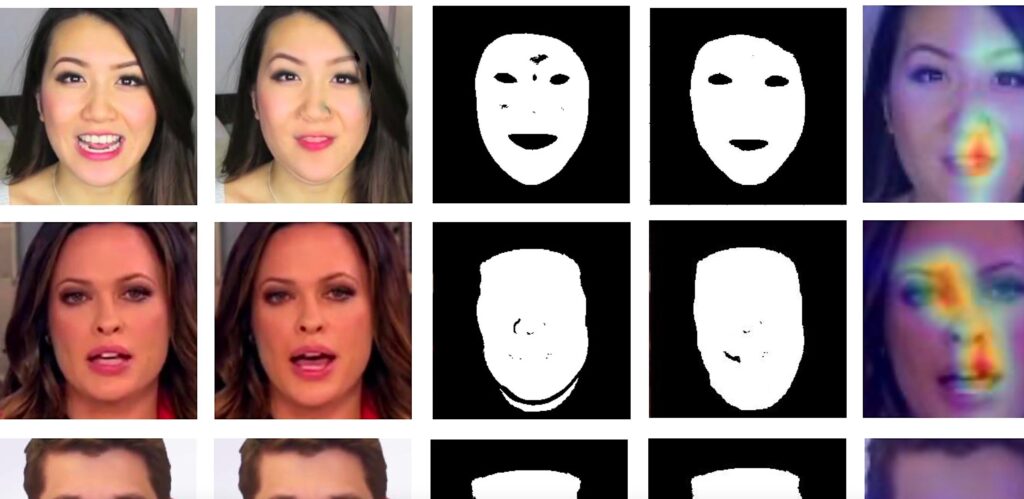Detecting DeepFake videos is becoming increasingly important due to their potential for deception and harm. Here are some tips to help you spot them:
- Eye Movements: Watch for unnatural eye movements or lack thereof, such as blinking too much or not at all, which can be challenging for AI to replicate accurately.
- Facial Appearance: Look for inconsistencies in facial features, like overly smooth or wrinkled skin, mismatched aging between facial parts, or emotions that don’t match the context.
- Nose Alignment: Check if the face and nose align naturally, as discrepancies could indicate manipulation.
- Glasses Reflection: Examine reflections in glasses for unnatural glare or inconsistencies in lighting.
- Facial Hair: Notice if facial hair looks realistic, as DeepFakes may alter or add facial hair unnaturally.
- Posture and Physique: Look for blurry edges or misaligned visuals, especially where the face meets the body, suggesting potential manipulation.
- Lip Movements: Pay attention to lip-syncing, robotic voices, or odd word pronunciation, which may indicate a DeepFake.
- Facial Moles: Check if facial moles appear natural or if their shape seems off, as this could be a sign of manipulation.
- Coloring: Look for unnatural skin tone, lighting, or shadows, which can indicate digital alterations.
- Teeth Appearance: Examine the realism of teeth, as algorithms may struggle to generate individual teeth accurately.
- Slow Motion Examination: Analyze details closely, such as lip movements, especially when slowed down, to detect inconsistencies that may not be visible at normal speed.
By being vigilant and observing these cues, you can better identify DeepFake videos and protect yourself from potential deception and harm.




